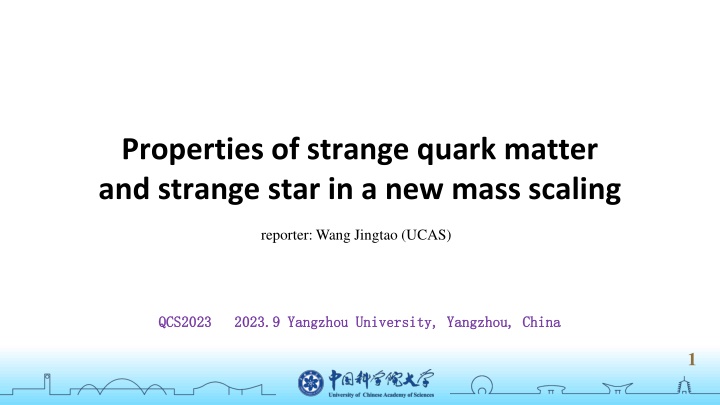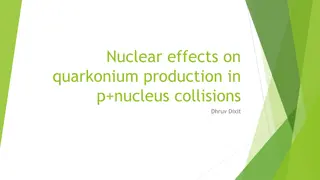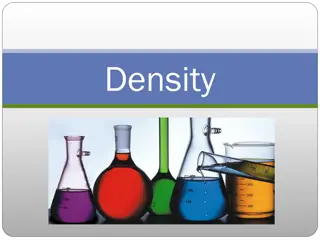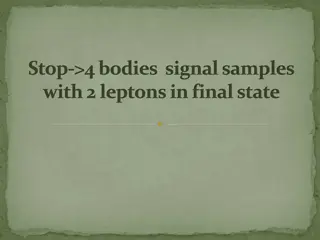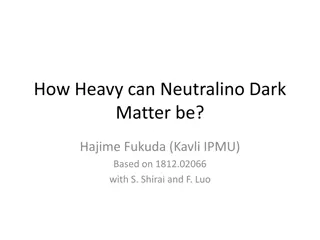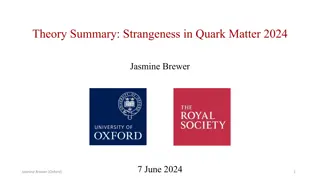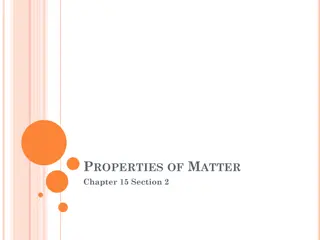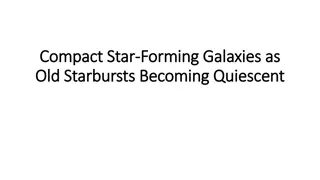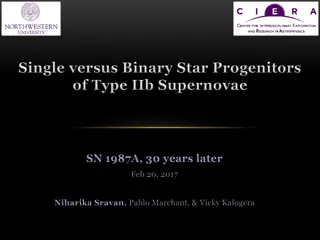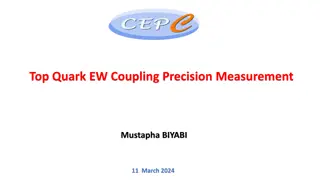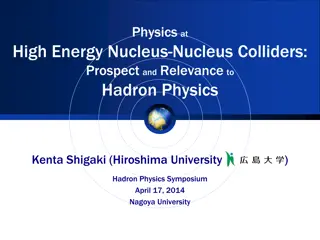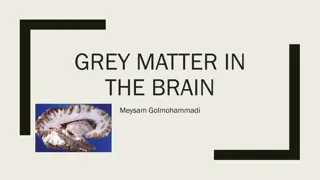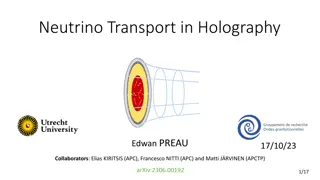Properties of strange quark matter and strange star in a new mass scaling
Mapping the characteristics and mass scaling properties of strange quark matter and strange stars, revealing challenges in quantum chromodynamics (QCD) calculations and exploring thermodynamic treatments.
Download Presentation

Please find below an Image/Link to download the presentation.
The content on the website is provided AS IS for your information and personal use only. It may not be sold, licensed, or shared on other websites without obtaining consent from the author.If you encounter any issues during the download, it is possible that the publisher has removed the file from their server.
You are allowed to download the files provided on this website for personal or commercial use, subject to the condition that they are used lawfully. All files are the property of their respective owners.
The content on the website is provided AS IS for your information and personal use only. It may not be sold, licensed, or shared on other websites without obtaining consent from the author.
E N D
Presentation Transcript
Properties of strange quark matter and strange star in a new mass scaling reporter: Wang Jingtao (UCAS) QCS2023 QCS2023 2023.9 Yangzhou University, Yangzhou, China 2023.9 Yangzhou University, Yangzhou, China 1
why strange quark matter thermodynamic treatment Outline mass scaling properties of strange quark matter calculation results of strange star
why strange quark matter 3-flavor quark matter 2-flavor quark matter u u s d d more degrees of freedom E. Witten, Phys. Rev. D 30, 272 (1984).
some problem with QCD...... perturbative QCD can not be used in strong coupling situation...... lattice QCD method requires huge computational effort...... it is hard to get properties of SQM from first principle calculation...... phenomenological method
thermodynamic treatment (equiparticle model) we start from free energy we take free energy density for a even system omega_0 is the thermodynaic potential of free particle system this is omega_0 when temperature is 0K.
thermodynamic treatment (equiparticle model) To introduce interaction between particles in a free system, we need to replace constant mass into effective mass and replace real chemical potential into effective potential. Temperature and baryon number density effective one by some math treatment(, we can get these thermodynamic functions.
thermodynamic treatment (equiparticle model) and here is particle number density and energy density when T tends to 0K we can calculate these thermodynamic functions when we know the effective chemical potential and particle mass.
mass scaling(history) At first, people considered the infrared confinement effect, and based on the bag model Peng G. X. derived a cubic root scaling by considering in-medium chiral condensation effect and linear confinement In 2012, Chen S. W. further added one-gluon-exchange effect and promoted a new scaling at zero temperature In 2014, Xia C. J. took first-order perturbation interaction into account, and got a similar scaling with a positive C
mass scaling the interaction mass term will be infinitely big with nb increasing when C is positive it is nonphysical that there exists an nb big enough to make quark mass negative with a negative C strange? maybe we can take asymptotic freedom effect into account to cancel this bug
mass scaling we introduce a Woods-Saxon type factor to simulate asymptotic freedom we can choose different n_a and w for calculations, but we need to make sure that there is some proper range for our parameter D and C..
2-flavor biger or equals to 930mev(56Fe) EPB mass scaling(range) 3-flavor 930mev? 939mev? we test two parameter group n_a, w)
properties of strange quark matter we can know m_i when n_b is set. as long as we get the chemical potential, we can calculate all these thermodynamic quantities
comparison between new and old scaling attractive repulsive
repulsive attractive
calculation results of strange star TOV equation
